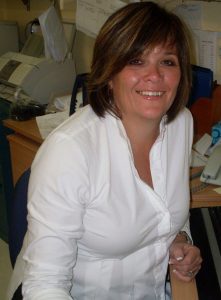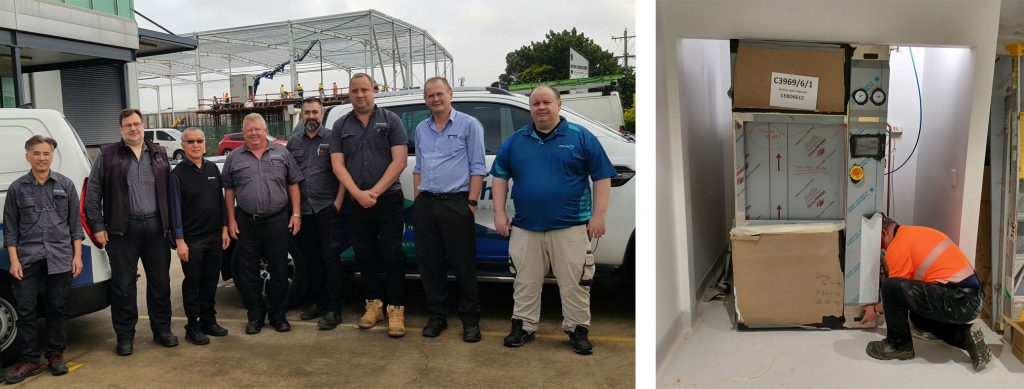

Happy New Year to all and welcome back to the first edition of Zoo News for 2022. We have a bumper Newsletter for the first of the year with a great interview with Debbie Bartlett from Dubbo Hospital. I would like to take this opportunity to thank everyone who has received a call for our customer survey – we value your feedback and this has been a fantastic opportunity for us to discover what we are doing right and where we could improve. The survey will be running for a few more weeks so if you are contacted we would really appreciate if you are able to spare the time to provide us with your views. I also must give my appreciation for the patience of our customers who are waiting on orders. We are still working hard to overcome staff shortages due to COVID and the understanding of our clients has been greatly appreciated.

Describe your role, how long have you been working in this role and at this location?
I have been employed in Dubbo Hospital CSD working for Greater Western Local Health District for 34 years. I worked as a Sterilising Technician and had the opportunity to attend an SRACA conference early in my career – this conference inspired me to go back to our facility and to make changes and improve processes. Looking back on my career now the late 80’s and 90’s demonstrated sterilising services were vital to the organisation but the definition of “out of sight out of mind” certainly fitted the profile – I identified that there was not only room for growth for the unit, but also myself.
I completed my sterilising Certificate and then went on to become an educator, then, after 12 years had the opportunity to apply for the Manager’s position. I was appointed to the Sterilising Manager position in 2000 and continued in this role for 18 years. During this time I was involved in a new rebuild of the sterilising unit which commenced in 2010. This enabled me to expand my knowledge in the sterilising world extensively and help develop a state-of-the-art sterilising unit including a tracking system that tracks to instrument which I am very proud of. This experience along with my expertise saw me appointed to District Manager of Sterilising and Reprocessing Service in 2018.
My position ensures that the reprocessing departments and units within Western NSW LHD are managed in accordance with current standards and policies that provide a quality service delivery, based on best practice. I oversee the operations of 5 sterilising units and 9 endoscopy units and I offer support to other reprocessing units such as Dental and radiology within the LHD. I provide leadership and expert advice regarding reprocessing of medical devices and I oversee and have co-ordinated a service within the LHD that provides support and staff to the smaller reprocessing units as needed. Dubbo is seen as the main hub within the LHD and provides resources such as education, audits and competencies to nursing staff reprocessing endoscopes. I oversee and coordinate services to remote sites like Bourke and Coonabarabran to ensure that the best patient outcomes are met.
My interest in inventory management has seen me venture into a new area in Sterilising – surgical equipment. This is essential to the delivery of healthcare and represents a significant proportion of the total asset base of individual health services. Surgical equipment and instruments are increasingly important to the health service and my role supports the Biomed Engineers in inventory management. We work together to ensure performance management and monitoring of surgical equipment and instrumentation aids in decision-making including comprehensive and accurate asset information. This allows the health service to develop asset management strategies and plans for surgical equipment.
My role also oversees contracts such as service level agreements, validation and installs within the LHD and ensures that vendors met their contractual commitments to the units.
How do you work with/what is your connection with sterilisation products, which of Atherton’s products do you use?
I have had a great collaboration with Atherton’s over the past 22 years since commencing as the manager in 2000. We have installed many Sterilisers and drying cabinets in 6 sites across the LHD over this period of time, the relationship has extended not only to management but to service techs who visit the sites for services and validation.
The staff and I have formed great friendships and partnerships with Atherton’s team over the years and this has allowed us to develop a rapport which is important to us when working in a country setting, needing ongoing support. Atherton has also been a great resource centre providing information and ongoing education to have a better understanding of our equipment, and issues around steam quality. They have gone out of their way to help and problem solve in the past and I feel we are very fortunate that we have this great relationship with them.
How do you describe your job to friends and family?
That’s tricky. Sterilising is very complicated and with my experience over the years, it is best to keep it as simple as possible and ensure that people understand I am sterilising instruments and not people.
My family and friends know I work in a hospital and I have explained that we are the heart of the hospital and while we are a hidden away unit we are vital to the organisation. Without sterile equipment a lot of procedures and processes cannot happen, it’s a fascinating place to work but it’s the kind of thing that most people don’t think about before they go in for surgery. I explained to friends and family we play an essential role in preventing outbreaks in hospitals as most clinical equipment used in hospitals is reusable. All equipment must be clean and safe before being used on another patient, our vital role is to keep patients safe.
What is the most challenging part of your job?
There are many challenges but the ones that stand out the most are the people and 4187! After working in the one facility for 30 years I have established a great rapport with the likes of maintenance staff, maintenance supervisors and managers, Biomed, nursing staff, NUMs, infection control and executives. This enables me to create a positive environment where we actively work together to achieve common goals – where I understand others’ capabilities and they have a clear understanding of my expectations.
When moving to the District role establishing these relationships with the same set of people in different areas has been challenging, especially when having to implement 4187 2014 and the other 30 standards associated with 4187 within a required timeframe.
When that rapport has not been established then you are up against the elements. The majority of the facilities had no governing structure or direct reporting lines therefore identifying the current level of compliance and the gaps along with the associate risks was necessary and this ruffled some feathers and presented some challenges.
The main challenges were the timeframe in which I had to work, establishing funding, identifying the gaps, implementing the plan and sustaining the effort to meet the expectation by 2021 and needing the support of core relationships in each facility that would enable me to meet my goals.
What do you enjoy most about your job?
WOW, the challenges I guess! No day is ever the same and sterilising is ever-evolving, I am passionate about what I do and finding what you’re passionate about is a journey within itself. I love my job and I have a sense of belonging. The job is changing all the time which allows me to constantly strive to grow and continually challenges me to do better.
Sterilising is the heart of the hospital and a function most people don’t know anything about but is essential to the patient’s journey – what is important to me is they don’t need to know who we are or what we do as long as we have the best outcomes for the patient. I enjoy empowering my staff to be the best that they can be to ensure better patient outcomes and constantly trying to improve processes and keep up with technology.
I am grateful for the prospect’s the job has given me and the opportunity for me to bring out the very best version of myself – I hope one day when I retire my legacy reflects my passion.
What books are at your bedside?
Outlander by Diana Gabaldon, and The Happiest Man on Earth by Eddie Jaku
What do you like to do in your spare time?
I enjoy time with my family, especially my grandson. I love spending time with my friends and travelling overseas. I am enjoying art lessons in readiness for my retirement
What is the one thing, you can’t live without?
My Family
In each edition of Zoo News we will feature a photo of one of the Service Teams around the country that is responsible for maintaining and servicing your sterilisation and decontamination equipment. In this edition it is the NSW Service Team.

Left to right: Vinh Phat Vuong, Kon Kapsalis, Eric Wong, Shaun Mitchell, Matthew Wright, James O’Neill, Grahame Burvill, Bill Giannitis. Chris Lewis working hard on one of our latest installs.

Atherton Study Day
Seats are still available for the next Atherton Study Day in May. These in-house training sessions offer an opportunity for new and experienced CSSD staff to learn about steam and low-temperature sterilisation, washer disinfectors and validation while getting hands-on with the equipment. The day also includes a tour of the facilities where our world-class sterilizers are manufactured.
Date: Thursday May 5th, 2022.
Location: Atherton Head Office, 372-376 Darebin Road, Alphington. Victoria
Numbers are limited so don’t miss out. To book call Customer Service on 1300 580 870 or salesandservice@atherton.net to reserve a place. Tea and coffee along with a light lunch will be provided. Closed shoes must be worn for the factory tour.
Back to articles